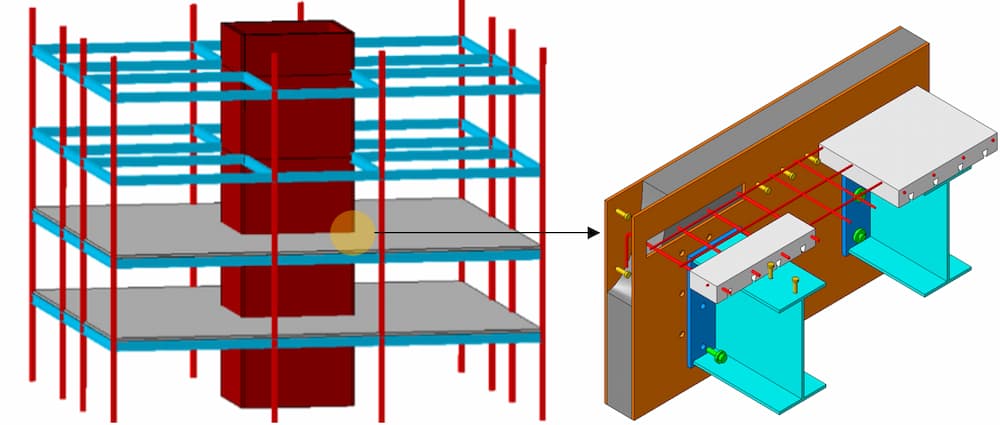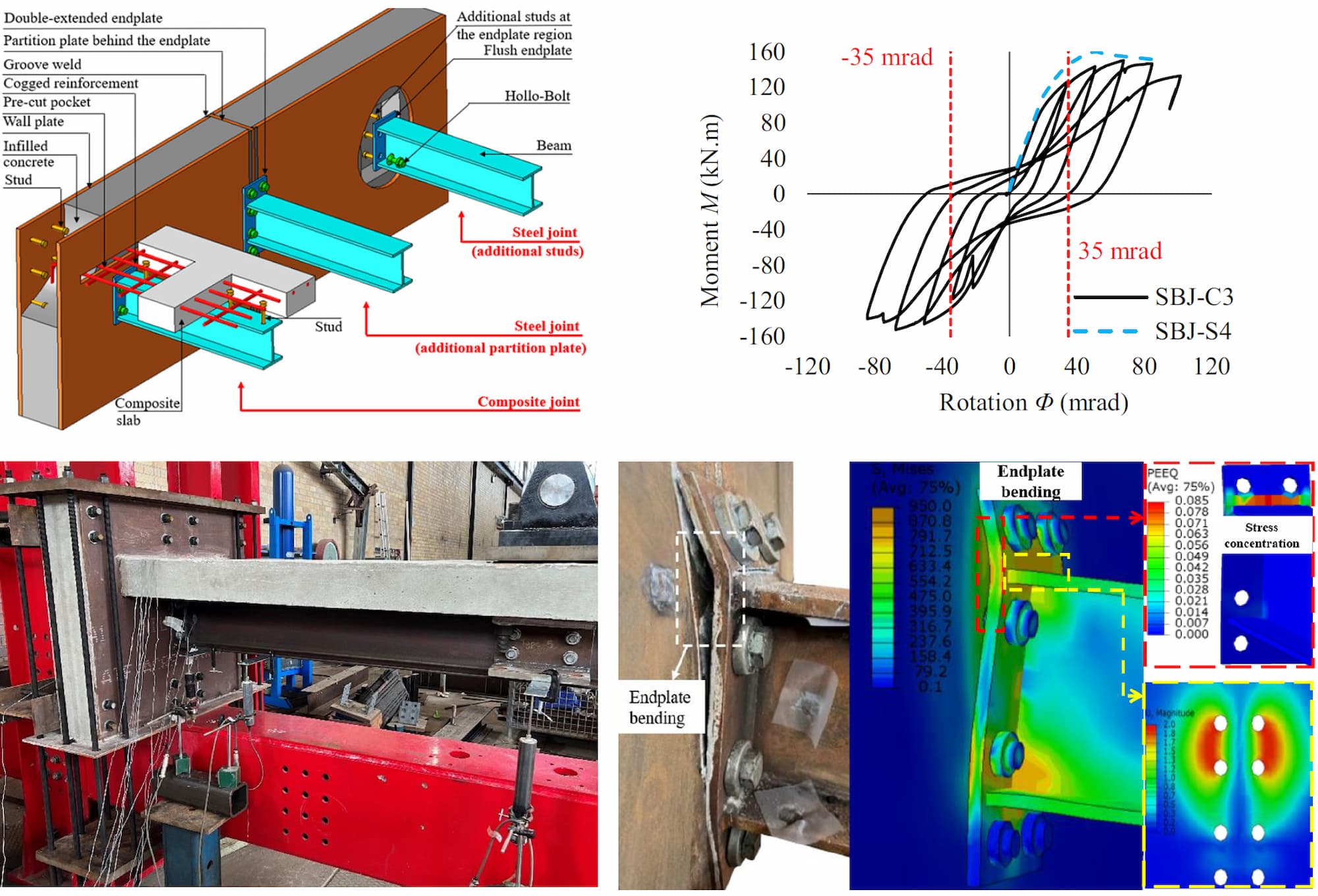Composite wall-to-beam joints
Composite shear walls offer significant benefits over conventional reinforced concrete (RC) shear walls due to eliminating the use of formwork and reinforcements [1]. They have been successfully used in a SpeedCore system in real-world projects of composite buildings such as the 58-story Rainier Square Tower in Seattle and the 19-story building at 200 Park Ave in San Jose with significant reduction in construction time. This project will therefore develop an innovative joining method to connect composite shear walls with composite beams using blind bolting technique. This is an ongoing project in collaboration with Professor Brian Uy at The University of Sydney funded by the ARC under Discovery Project scheme (DP200100112).

Experimentation
Two groups of experiment testing of connections with steel and composite beams composed of a total number of 13 specimens were conducted under static and cyclic loadings. Testing parameters include (1) type of endplate, (2) strength of steel beams, (3) bolt diameters, and (4) reinforcement ratio [2].
Numerical Modelling
Numerical study has been conducted in Ref. [2,3] to explore the behaviour of the connection.

Design Code Development
The guidelines for this new connection will be also included in the next version of the composite standard ASNZS 2327.
References
[1] Mo J, Uy B, Li D, Thai HT, Tran H. A review of the behaviour and design of steel–concrete composite shear walls. Structures 2021;31:1230-1253.
[2] Li D, Uy B, Jun M, Wang J, Thai HT. Behaviour and design of steel and composite beam connections to
composite walls. Journal of Constructional Steel Research 2023; 206:107915.
[3] Li D, Uy B, Jun M, Thai HT. Behaviour and design of bolted endplate joints between composite walls and steel beams. Steel and Composite Structures 2022; 44(1):33-47.
.